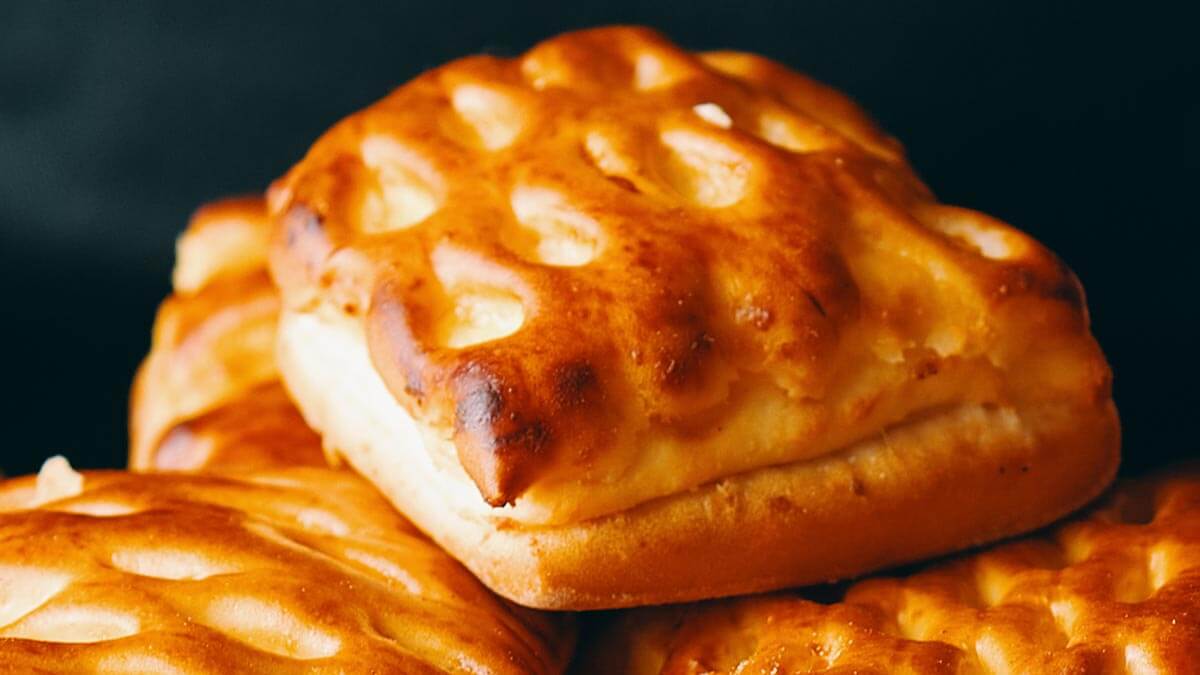Table of Content
- Understanding the Market of Gluten-Free Products
- Why Should B2B Bakeries Offer Gluten-Free Sweets?
- Challenges and Solutions in Producing Gluten-Free Sweets
- Ingredient Spotlight: Is Corn Flour Gluten-Free? & Sourcing
- Mastering Gluten-Free Cakes and Biscuits
- Expanding Your Menu: A Variety of Gluten-Free Desserts
- Pro Tip: Customize Your Gluten-Free Flour Blends
- Preventing Cross-Contamination for Gluten-Free Products
- Conclusion
1. Understanding the Market of Gluten-Free Products
The market for gluten-free products is experiencing exponential growth. Once a niche category, products without gluten have entered the mainstream, with a growing percentage of consumers actively seeking them out.
Research shows that the gluten-free market is steadily growing. For example, Grand View Research valued it at $6.45 billion in 2022 and predicts it will reach $13.76 billion by 2030. That’s a big increase, offering a great opportunity for businesses that are willing to adapt.
This growth is fueled by several factors:
- Increased Diagnosis of Celiac Disease and Gluten Sensitivity: More people are being diagnosed with celiac disease, an autoimmune disorder triggered by gluten consumption, and non-celiac gluten sensitivity, which causes similar symptoms.
- Health and Wellness Trends: Many consumers without a medical need for gluten-free products perceive them as healthier, often associating gluten with digestive issues and inflammation.
- Improved Product Quality: The taste and texture of gluten-free products have improved dramatically in recent years, making them more appealing to a wider audience.
- Wider Availability: Gluten-free options are now readily available in supermarkets, restaurants, and bakeries, making it easier for consumers to adopt a gluten-free lifestyle.
2. Why Should B2B Bakeries Offer Gluten-Free Sweets?
For B2B bakeries, offering gluten-free sweets is no longer a specialized consideration; it's becoming a business imperative.
Here's why:
- Expand Your Customer Base: Tap into a rapidly growing segment of the market that is actively searching for gluten-free sweets.
- Increase Revenue Streams: Introduce new product lines and attract customers who may have previously been unable to purchase from you.
- Enhance Brand Image: Position your business as forward-thinking, inclusive, and responsive to consumer demands.
- Competitive Advantage: Differentiate yourself from competitors who haven't yet embraced the gluten-free trend.
- Cater to Dietary Needs: Provide options for customers with celiac disease, gluten sensitivity, or those choosing a gluten-free lifestyle.
- Unlock New Partnerships: Create links with retailers, catering businesses, restaurants, and other B2B clients focused on gluten-free products.
What are the risks of not offering gluten-free sweets? You risk losing potential customers to competitors who do cater to this growing market segment.

3. Challenges and Solutions in Baking Gluten-Free Sweets
Gluten is a protein found in wheat, rye, and barley that gives baked goods their structure, chewiness, and ability to rise. It creates a network that traps air, helping dough expand and giving it a nice texture. Without gluten, these qualities are lost, making baking more challenging. Simply swapping wheat flour for one gluten-free flour usually doesn’t work well.
Successful gluten-free baking requires a well-balanced mix of flours, starches, and binders to replace gluten’s role. This means using a different method than traditional baking.
- Starches: These provide lightness and help bind ingredients, contributing to a tender crumb. Common options include:
- Potato starch – Adds moisture and softness.
- Tapioca starch/flour – Gives a slight chewiness and helps with browning.
- Cornstarch – Creates a delicate crumb but should be used in moderation.
- Arrowroot starch – Adds lightness and can also be used as a thickener.
- Flours: These provide structure and contribute to the overall flavor profile.
- Rice flour (white & brown) – Versatile with a neutral taste.
- Almond flour – Rich, nutty flavor with a moist texture.
- Sorghum flour – Whole-grain with a slight sweetness.
- Certified gluten-free oat flour – Light with a mild, oaty sweetness.
- Millet flour – Delicate texture with a slightly sweet flavor.
- Binders: Essential for mimicking gluten's elasticity and preventing crumbling. Options include xanthan gum, guar gum, and psyllium husk.
- Eggs and Liquids: Eggs provide structure, richness, and moisture. Adequate liquid is crucial for hydration and texture in gluten-free baking. The correct balance is key.
What are the primary textural differences between gluten-free sweets and traditional baked goods, and how can these be addressed through ingredient selection?
4. Ingredient Spotlight: Is Corn Flour Gluten-Free? & Sourcing
A common question from bakeries starting gluten-free production is whether corn flour is gluten-free. The answer is yes, pure corn flour—made from finely ground corn—is naturally gluten-free.
However, for bakeries, it's not enough to just know that an ingredient is gluten-free. Certification is very important. There’s a risk of cross-contamination during processing, packaging, and transport. So, always use certified gluten-free corn flour, and other gluten-free ingredients, from trusted suppliers.
To ensure safe gluten-free baking, it’s not just about the corn flour. Every ingredient in your bakery should be handled carefully. Choose suppliers who provide clear information about where their ingredients come from, how they are processed, and how they are stored and transported.
Here are key practices for ensuring your gluten-free ingredients stay safe:
- Certification: Look for the “Certified Gluten-Free” label from trusted certifying organizations. This means the product has been tested and meets strict gluten standards.
- Supplier Vetting: Work with suppliers who specialize in gluten-free products and have clear protocols to prevent cross-contamination. Ask them about their sourcing, processing, storage, and transportation methods.
- Ingredient Testing: Even certified ingredients should be tested occasionally to be sure they are safe. This adds extra protection and shows you care about quality.
- Bulk Purchasing and Storage: Buying in bulk is cost-effective, but make sure to store gluten-free ingredients properly. Keep them in separate, sealed containers and clearly labeled areas.
- Transparency and Traceability: Work with suppliers who provide detailed information about their products.
Taking these steps will help bakeries reduce the risk of cross-contamination and ensure their gluten-free products are safe for customers with celiac disease or gluten sensitivity.
What steps will you take to ensure the safety of your gluten-free ingredients from receiving them to the final product?
Do you need a supplier for gluten-free ingredients? Request a quote on europages to find the best supplier for your project today.

5. Mastering Gluten-Free Cakes and Biscuits
Making great gluten-free cakes and biscuits means using the right ingredients and methods for each type of baked good. Since gluten-free baking works differently, small changes can make a big difference in texture and flavor.
For a gluten-free birthday cake, the goal is to achieve a light, fluffy, and moist texture. This can be done with a balanced flour blend: rice flour for a neutral base, tapioca starch for lightness, potato starch for moisture retention, and a touch of almond flour to add richness and flavor.
Since gluten usually provides structure, xanthan gum is necessary to hold everything together. To keep the cake from drying out, ingredients like applesauce, yogurt, or buttermilk can help with moisture. It’s also often helpful to use a slightly higher ratio of wet to dry ingredients compared to traditional cake recipes to achieve the best results.
For gluten-free biscuits, a different strategy is needed to achieve a tender, flaky texture. While a similar flour blend of rice flour, tapioca starch, and almond flour can be used, the key to creating flaky layers is plenty of cold butter or shortening.
Chilling the dough before baking helps prevent the biscuits from spreading too much and ensures they hold their shape. Unlike cakes, which need more moisture, gluten-free biscuits require the right balance to avoid becoming too dense or soggy. Xanthan gum remains important for keeping the dough together and preventing crumbling.
With the right techniques and ingredients, gluten-free cakes and biscuits can turn out just as delicious as their traditional counterparts.
6. Expanding Your Menu: A Variety of Gluten-Free Desserts
To truly succeed in the gluten-free market, bakeries need to offer more than just the standard cake and biscuit options. Expanding your dessert menu with a variety of gluten-free desserts allows you to attract a wider range of clients and showcase your expertise. This means adapting classic recipes using the right gluten-free flours and binders.
- Brownies and Bars: Their naturally dense texture makes them ideal for gluten-free adaptation. A good gluten-free flour blend, with plenty of chocolate and fat, is crucial.
- Pies and Tarts: Gluten-free pie crust requires a well-balanced blend of flours (rice, tapioca, almond), cold fat, and a binder. Blind baking is often recommended.
- Muffins and Quick Breads: These are generally forgiving. A good all-purpose gluten-free flour blend, with leavening agents, works well. Fruits, nuts, and spices add variety.
- Pastries: Delicate pastries are the most challenging, requiring significant experimentation with flour blends, binders, and lamination.
- Other Options: Consider naturally gluten-free desserts like cheesecakes (with a gluten-free crust), mousses, puddings, crumbles (with gluten-free topping), and many ice creams and sorbets (always check ingredients). Macarons are a great option too.
7. Pro Tip: Customize Your Gluten-Free Flour Blends
Don’t rely only on pre-mixed, all-purpose gluten-free flour blends for every recipe. While convenient, these mixes often give a "one-size-fits-all" result that might not work best for every product.
For better results, create your own custom flour blends suited to each item. This lets you adjust the texture, flavor, and performance to fit your needs. Start by researching different gluten-free flours and experiment with various ratios. Take detailed notes on your trials, including the proportions used, texture, and taste.
Over time, you'll develop your own set of custom blends that can make your gluten-free products stand out. You could even create a "signature blend" unique to your bakery.
Are you a supplier for gluten-free products looking for more exposure? Our team can help you reach new customers. Request a consultation to learn more.

8. Preventing Cross-Contamination for Gluten-Free Products
For individuals with celiac disease or severe gluten sensitivity, even small amounts of gluten can cause a harmful reaction. To ensure safety, bakeries making gluten-free sweets must have strict procedures to avoid cross-contamination. This is not optional—it's essential for responsible food production.
Key steps to prevent cross-contact include:
- Dedicated Space and Equipment: Set up a separate gluten-free baking area, or use dedicated equipment and storage. Never share between gluten-free and gluten products, and ensure thorough cleaning in shared spaces.
- Thorough Cleaning and Sanitization: Clean and sanitize all surfaces, equipment, and utensils before and after gluten-free baking, including mixing bowls, pans, and spatulas.
- Employee Training: Train all staff on proper gluten-free handling, including ingredient storage, preparation, and cleaning to prevent cross-contamination.
- Separate Ingredient Storage: Store gluten-free ingredients separately in sealed, labeled containers to avoid mistakes and reduce contamination risks.
- Airborne Flour Control: Minimize airborne flour dust, especially wheat flour, to prevent cross-contamination. Proper ventilation and careful handling are essential.
If you want to learn more about current food trends and innovations, read these insightful articles:
- Vegan Sweets: A Growing Market for Bakeries
- Edible Food Packaging: A Sustainable Future?
- Glass Food Storage Containers for supermarkets
- Fermented Foods: Benefits, Trends & Sustainability
- Stainless Steel in Food Processing: Highest Hygiene
- The Different Types of Pizza Ovens
- Advancing Market Potential with Plant-Based Food Innovations
- Foodceuticals: The Future of Food & Health
9. Conclusion
The growing popularity of gluten-free diets, driven by both medical needs and consumer preferences, has created a large and expanding market for gluten-free sweets. For B2B suppliers, this presents both an opportunity and a challenge.
Success requires understanding the unique properties of gluten-free ingredients, sourcing certified gluten-free products from trusted suppliers, maintaining strict procedures to avoid cross-contamination, and offering a diverse menu beyond the basics. Bakeries that excel in these areas will meet the increasing demand and build a reputation for quality and inclusivity.
But the shift in dietary preferences doesn’t stop with gluten-free. More consumers are now seeking plant-based, or vegan, options, which eliminate all animal products, including dairy and eggs.
This adds an extra layer of complexity for bakeries. Creating gluten-free and vegan products requires innovative recipe formulation, using ingredients like aquafaba, flaxseed meal, and plant-based butters to replace traditional components.
Bakeries that succeed in this dual challenge will be well-positioned to serve a rapidly growing market and adapt to changing consumer needs. Could the future of baking be found at the intersection of gluten-free and plant-based innovation?
Find Suppliers for Gluten-Free Products on europages!
Nerano Group: This company provides high-quality, allergen-free, and gluten-free products, perfect for children and popular worldwide. Their flavorful flakes, including the new "Salted Caramel," offer a delicious and worry-free option for businesses.
Healthy Generation LLC Ukraine: This company offers a wide range of gluten-free products, including rice pastas with unique vegetable and flavor combinations, buckwheat sticks with stevia, and whole-grain amaranth and oat flakes. Their "Healthy Generation" and "PASTA" lines cater to health-conscious consumers seeking diverse, gluten-free options.
Molino Magri: Is a fifth-generation milling company producing a wide range of professional flours, including specialized gluten-free options like their "MAGRI FREE Napoletana" blend for baked goods. They focus on innovation, quality, and safety, partnering with B2B clients to create high-quality, delicious, and healthy food.
Millbäker: A French company specializing in ingredient solutions for baking professionals, offers over 10 years of expertise in creating delicious, high-quality gluten-free preparations for breads, baguettes, and pastries. They emphasize custom formulation, adapting to client specifications to deliver gluten-free solutions with authentic flavors and guaranteed safety through careful raw material selection.
The Ingredients Experts: Is a professional partner for high-quality, gluten-free food ingredients, offering a broad selection of plant-based proteins such as potato, sunflower, rice, pea, and hemp. They provide customized ingredient solutions and a global supply network, ensuring certified quality, competitive pricing, and timely delivery for food and beverage manufacturers.
Gristiren Ltd: Specializes in producing delicious, high-quality vegan cheese and dairy alternatives, offering a wide range of gluten-free options like cheddar, edam, feta, gouda, and mozzarella made from plant-based ingredients. Their products, available in various formats (blocks, slices, shreds), cater to both retail and food service businesses with a focus on taste, health, and sustainability.
INACO: Produces certified organic, gluten-free cookies and pastries using 100% organic ingredients like rice flour, cane sugar, and sunflower oil, avoiding wheat in their gluten-free lines. This family-owned company offers a range of healthy, high-fiber products, including gluten-free options like Chocolate Bottom, Girasoles, Fruit Cookies, Bio Cookie, and Chocolate Chip Cookies.
GASME FEIJÓO SL: Is a leading wholesaler of nuts, specializing in importing and exporting high-quality pecan nuts (with and without shells) and offering other nuts like Castilian walnuts and rice flour. They focus on bulk, fresh products, sourcing directly from producers in Argentina and Brazil, and are committed to sustainable practices and building strong, global customer relationships.

